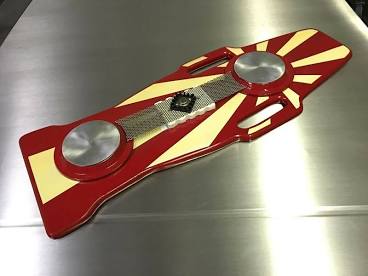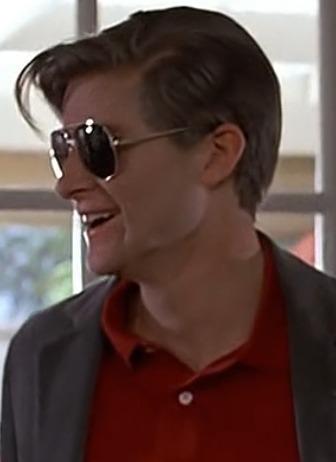© 2025 ALLCITY Network Inc.
All rights reserved.


In my dream, I’m riding my hoverboard around the square to the diner, where I make a stop for a soda at the counter. But just as I sit down, I look up in the mirror behind the counter, and I see him. The bully who is about to put his hand on my shoulder. But when I look at my own face, I realize I’m not Marty McFly, nor myself. I’m George. I don’t want to be George.
Then I wake up. I haven’t talked to my therapist about that one just yet.
When Crispin Glover was asked to come back to the Back To The Future franchise for the second film as George McFly, he’d seen an initial script and hated it. To make it hard for the producers to bring him in for something he wasn’t sure he wanted to do, he asked for an outlandish amount of money in comparison to their initial offer. Producers took the hint, took their plans elsewhere, and offered the role to someone more affordable. Oh, and they also took one more thing.
His face.
Not in a Nick Cage/John Travolta sort of a way, thank goodness, but in a “we still want this actor to look like the last guy” sort of a way. The powers that be thought it important enough to keep the likeness of Glover in the film, that they took a rubber mask they’d made of him in the first film and used it to make prosthetics to make the replacement actor look terrifyingly like him. Other roles in the film had been recast without anyone’s face getting taken, but there on screen was pseudo-Glover for all to see.

No one was more surprised to see this than Glover, who felt the film had taken something that he thought belonged to him. While they hadn’t used his name, they had certainly used his image and likeness. Glover sued the production for his right of publicity and won. That’s as it should be, because… Your face is… Yours… Right?
Well, usually, anyway. Sometimes no. The trio of Name, Image, and Likeness (NIL) were a pretty big topic in collegiate sports this last week, as yesterday a rules change opened the floodgates for collegiate athletes to be able to leverage their faces and names to profit themselves, instead of the billion-dollar entity they’d signed those rights away to, in the interest of being able to compete on the highest stage they could. Immediately, businesses moved to sign athletes to contracts that previously would have ruined their amateur status and bumped them from their athletic programs.
Detractors of the move feel that the rollout is ill-conceived, and that the flood of cash coming to some of these kids just cresting the hill of adulthood will ruin the magic and homogeny of the student-athlete pool. They worry that the extremes of this model will give a few kids a “castle on the hill” that may shift the dynamic and innocence of the games.
Proponents feel that the innocence went away long ago, at least when the Association itself became the fiscal juggernaut it now is. Though the returns of the 2021 March Madness tourney are still a little fuzzy, depending on where you check, the 2019 version earned the NCAA north of a billion dollars all by itself. When the coaches guiding the amateur athletes started pulling down million-dollar deals themselves. That the athletes deserve to at least be able to capitalize on their own fame, since they don’t get any piece of that sizable pie.
Having been around since the early 1900’s, the NCAA has maintained this level of control over their athletes for an amazingly long time, profiting from the output of the “workers” labors while keeping their wallets surprisingly light. The amount of time and effort the student-athlete often puts into playing for the school’s glory also keeps them from being able to hold down a job that could help support them. For many, a scholarship often alleviates that burden, but for many more, it’s simply something they’re left to figure out. Will that hardship be alleviated if their local mom-and-pop shop throws them a few bucks? Who knows? Will that affect their lives? Their games? Their futures? Absolutely. Will that work out for better or worse? I think for the better, but am a single opinion. Truly, only time will tell where this complex new model settles out.
As these athletes and the NCAA sail off into this fractious and brave new world the NIL changes bring, the only thing that is sure is that these human beings’ names and faces finally belong to them again. It’s hard to argue that any one of us doesn’t deserve that. Maybe the theoretical innocence and hopefulness of amateur sport can lean into that same spirit in tackling this moment. The spirit of hope. Hopefully this massive shift means great things for the futures of these young athletes and the future of their sports.
Comments
Share your thoughts
Join the conversation



